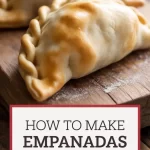You know that feeling when you’re about to embark on a culinary adventure and all you need is the perfect pita bread to make it a divine experience? Well, you’re in luck! This super simple, no-fuss recipe will have you kneading and baking to your heart’s content, and by the end, you’ll have heavenly soft, puffed pitas that taste like they’ve been kissed by the Mediterranean sun.

Making your own pita pockets can be both fun and rewarding. All-purpose flour, a little olive oil, and just the right amount of active dry yeast yield a fresher, preservative-free alternative to buying them.
I find that using warm water and a bit of sugar helps activate the yeast perfectly, creating the airy pocket needed for your favorite fillings.
Homemade Pita Pockets Recipe Ingredients

- All-purpose flour: Provides carbohydrates and structure; essential for soft, chewy texture.
- Warm water: Activates yeast; crucial for dough rise and airy pockets.
- Active dry yeast: Ferments sugars; causes dough to rise; enhances flavor.
- Sugar: Feeds yeast; enhances flavor; contributes slight sweetness.
- Salt: Balances flavors; strengthens gluten structure; adds savory taste.
- Olive oil: Adds moisture; enriches flavor; provides healthy fats.
Homemade Pita Pockets Recipe Ingredient Quantities
- 3 cups all-purpose flour
- 1 1/2 cups warm water (110°F/45°C)
- 2 teaspoons active dry yeast
- 1 teaspoon sugar
- 1 teaspoon salt
- 1 tablespoon olive oil
How to Make this Homemade Pita Pockets Recipe
1. In a tiny basin, mix the tepid water, sugar, and live, dry yeast. Stir mildly and let it lounge for around 5-10 minutes until the blend becomes spumy.
2. Combine the salt and all-purpose flour in a big mixing bowl. Make a well in the middle and add the yeast mixture and olive oil.
3. Blend the components together until you see a semblance of a dough. Then move the now-formed dough to a surface floured enough to ensure no sticking occurs. Knead the dough on that surface for 8-10 minutes, and you’ll see it transform into a smooth, elastic form that would surely make the ancient Romans proud.
4. Put the dough into a bowl that you have oiled lightly. Cover the bowl with a clean, damp cloth, and place it in a warm area. Let the dough rise for about 1 hour, or until it has roughly doubled in size.
5. Heat your oven to 475°F (245°C) with a baking stone or an inverted baking sheet inside.
6. Deflate the dough to remove any air bubbles, then portion it into 8 equal parts. Each part gets shaped into a ball.
7. Using a rolling pin, roll each ball of dough into a circle that is 1/4 inch thick. Make sure they are an even thickness to help them puff up right.
8. Set the pitas that have been rolled out onto the preheated baking stone or sheet and bake a few at a time to avoid overcrowding.
9. Pita breads should be baked for a duration of 3-5 minutes, or until they become fully puffed and are a light golden color.
10. Take from the oven, encase in a fresh towel, and let them rest before slicing and stuffing. You’ll want to maintain their soft texture, so you can even go the extra mile and keep them in a low oven (or warming drawer, if you have one) until you’re ready to fill and serve.
Homemade Pita Pockets Recipe Equipment Needed
1. Measuring cups and spoons
2. Small bowl
3. Large mixing bowl
4. Wooden spoon or spatula
5. Clean surface for kneading
6. Rolling pin
7. Kitchen cloth (damp)
8. Baking stone or inverted baking sheet
9. Oven
10. Knife (for portioning the dough)
11. Fresh towel (for wrapping baked pitas)
FAQ
- Q: Can I use whole wheat flour instead of all-purpose flour?
A: Yes, you can swap in whole wheat flour for all-purpose flour, but try a mix of 50% whole wheat and 50% all-purpose to keep your baked goods soft. - Q: How can I ensure my pitas puff up correctly?A: Ensure that your oven reaches a temperature of no less than 475°F (245°C) before you put your pizza in, and roll the dough as evenly as you can so that it puffs up nicely in the oven.
- Q: Can I freeze the pita bread?A: Absolutely! When the pitas are fully cooled, you can encase them in lovely plastic wrap and then tuck them into an airtight bag. These two will keep the pitas fresh in the freezer for up to 2 months.
- Q: How do I know when the dough has risen enough?A: The shape should be twice the size of the starting shape. It takes this long because this is the ideal temperature for yeast. If the area is too cold, the dough will rise too slowly. If the area is too hot, the yeast may die, and the dough will not rise at all.
- Q: Can I knead the dough by hand if I don’t have a stand mixer?A: Certainly, if you’re kneading by hand, use a very lightly floured surface and knead for about 10 minutes until the dough is smooth and elastic. It really is best to knead in this way to get a feel for how the dough changes. Just remember not to overknead!
- Q: What could cause my pitas to be dense?A: Too much flour or insufficient proofing can lead to pitas that don’t puff. Measure the flour properly and allow the dough to rise until it has doubled in size.
Homemade Pita Pockets Recipe Substitutions and Variations
If you want whole wheat flour, you can substitute it for all-purpose flour, and you will get a nuttier taste and more fiber.
Use instant yeast, instead of active dry yeast, in the same quantity, and do not proof it in water.
Use honey or maple syrup instead of sugar to contribute a slight flavor variation.
Should you find yourself devoid of olive oil, you may substitute it with either avocado oil or melted coconut oil.
Pro Tips
1. Check Yeast Freshness: Ensure your yeast is fresh and active. If the yeast doesn’t become foamy after 10 minutes in step 1, your yeast may be inactive, affecting the dough’s rise.
2. Use Precise Water Temperature: Maintain the water temperature around 110°F (45°C) to activate the yeast effectively without killing it. A kitchen thermometer can help ensure accuracy.
3. Knead Properly: When kneading the dough, use the heel of your hand and push forward slightly. Rotate the dough 90 degrees and repeat, adding small amounts of flour if it’s too sticky. Proper kneading is key for gluten development, which gives the pita its characteristic texture.
4. Optimize the Rise: To ensure the dough rises sufficiently, place it in a slightly warm, draft-free environment. An oven with the light on or a microwave with a bowl of hot water inside can create a warm environment ideal for rising.
5. Watch the Baking Time: Keep a close eye on the pitas while they bake. They puff up quickly, and baking too long can make them hard. Pull them out as soon as they are fully puffed and just beginning to color for the best texture.

Homemade Pita Pockets Recipe
My favorite Homemade Pita Pockets Recipe
Equipment Needed:
1. Measuring cups and spoons
2. Small bowl
3. Large mixing bowl
4. Wooden spoon or spatula
5. Clean surface for kneading
6. Rolling pin
7. Kitchen cloth (damp)
8. Baking stone or inverted baking sheet
9. Oven
10. Knife (for portioning the dough)
11. Fresh towel (for wrapping baked pitas)
Ingredients:
- 3 cups all-purpose flour
- 1 1/2 cups warm water (110°F/45°C)
- 2 teaspoons active dry yeast
- 1 teaspoon sugar
- 1 teaspoon salt
- 1 tablespoon olive oil
Instructions:
1. In a tiny basin, mix the tepid water, sugar, and live, dry yeast. Stir mildly and let it lounge for around 5-10 minutes until the blend becomes spumy.
2. Combine the salt and all-purpose flour in a big mixing bowl. Make a well in the middle and add the yeast mixture and olive oil.
3. Blend the components together until you see a semblance of a dough. Then move the now-formed dough to a surface floured enough to ensure no sticking occurs. Knead the dough on that surface for 8-10 minutes, and you’ll see it transform into a smooth, elastic form that would surely make the ancient Romans proud.
4. Put the dough into a bowl that you have oiled lightly. Cover the bowl with a clean, damp cloth, and place it in a warm area. Let the dough rise for about 1 hour, or until it has roughly doubled in size.
5. Heat your oven to 475°F (245°C) with a baking stone or an inverted baking sheet inside.
6. Deflate the dough to remove any air bubbles, then portion it into 8 equal parts. Each part gets shaped into a ball.
7. Using a rolling pin, roll each ball of dough into a circle that is 1/4 inch thick. Make sure they are an even thickness to help them puff up right.
8. Set the pitas that have been rolled out onto the preheated baking stone or sheet and bake a few at a time to avoid overcrowding.
9. Pita breads should be baked for a duration of 3-5 minutes, or until they become fully puffed and are a light golden color.
10. Take from the oven, encase in a fresh towel, and let them rest before slicing and stuffing. You’ll want to maintain their soft texture, so you can even go the extra mile and keep them in a low oven (or warming drawer, if you have one) until you’re ready to fill and serve.






